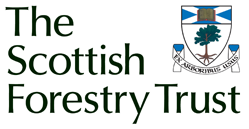Re-evaluating rotational upland Sitka spruce mixtures
Carried out by: Dr Scott McG Wilson
Summary Description:
Drought damage to Sitka spruce in eastern Britain and disease impacts on pine and larch more widely, suggest that total reliance on Sitka spruce monocultures for upland forestry may prove unwise. Introduction or mutation of pests/ pathogens could have critical silvicultural and processing implications. While Sitka spruce endures, commercial growers are reluctant to select less familiar alternatives on a precautionary basis. Deployment of “insurance” mixtures of Sitka spruce and alternative productive conifers, capable of completing the rotation, offers a potential compromise. Key companion species include alternative spruces, Douglas fir, Abies firs and western hemlock. This short project will review the fairly restricted record for these “non-nursing” spruce mixtures in British upland forestry, emphasising silvicultural and wood property comparisons, based on literature review, technical discussions, comparative site-yield analyses and field inspection of relevant stands. Dissemination will be by short technical report/ information guide, articles for the forestry press and seminar presentations.
Timescale: 2014
SFT Funds Awarded: £1,750
Project Outcomes:
This project re-evaluated mixed-species upland plantations, combining Sitka spruce with alternative productive conifers. Work encompassed Sitka spruce mixtures with Norway spruce, Douglas fir, western hemlock, grand fir and noble fir, but also touched on other potential alternatives. This subsidiary silvicultural approach has not been widely prioritised since the mid-1960’s. Information was collated from literature review, technical discussions, field reconnaissance and desk analyses comparing performance of species on similar site types. The work suggests that this approach could offer significant benefits of resilience to novel pests and diseases, and to a lesser extent, climatic change. Also in terms of silvicultural development and ecological sustainability. These would be accompanied by considerable challenges of higher costs and complexity of establishment and stand silviculture, with a risk of reduced timber income, pending future market development initiatives. At present the calibrated response is cautious expansion of operational deployment, combined with re-invigorated research and development efforts.
How have the results been used?
To get a complete picture of the project, you can download the full report and the author, Dr Scott McG Wilson can also be contacted for further information.
The Scottish Forestry Article published by Wilson and Cameron can be downloaded here. If using or citing the article elsewhere please acknowledge Scottish Forestry in doing so.
Further Information
| Title | Source | Date |
|---|---|---|
| Alternative models for productive upland forestry; Model 2: Sitka spruce mixtures with alternative conifers Scott McG Wilson and Andrew D Cameron | Scottish Forestry - Vol 69 No 1 2015 | 2015 |
